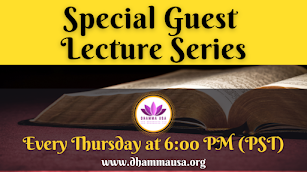Literary and Philosophical Contributions of Buddhism: A Global Perspective
By Nivitigala Sumitta Thero (Bhante Sumitta)
Abstract
Buddhism, originating in ancient India around the 6th century BCE, has made profound literary and philosophical contributions that extend far beyond its cultural and geographical origins. This article explores the literary and philosophical impacts of Buddhism both within India and globally. It examines key Buddhist texts, the development of philosophical ideas, and the influence of Buddhist thought on literary traditions across various cultures.
Introduction
Buddhism’s influence on literature and philosophy is a testament to its profound impact on human thought and culture. The philosophical insights and literary works emerging from Buddhist traditions have shaped not only Indian intellectual life but also the global cultural landscape. This article provides an overview of Buddhism’s contributions to literature and philosophy, highlighting key texts, philosophical doctrines, and the cross-cultural dissemination of Buddhist thought.
Literary Contributions
1. Buddhist Textual Tradition
The Buddhist literary tradition is rooted in a vast body of texts that include the Pali Canon, the Mahayana Sutras, and various commentaries and treatises. The Pali Canon, or Tipitaka, is the earliest and most authoritative collection of Buddhist scriptures. According to Bhikkhu Bodhi in The Connected Discourses of the Buddha, these texts encompass a wide range of genres, including discourses, dialogues, and ethical teachings, which have profoundly influenced literary and philosophical traditions in Asia.^1
2. Influence on Indian Literature
Buddhism significantly impacted classical Indian literature. The Jataka tales, which recount the previous lives of the Buddha, are a notable example of Buddhist narrative literature. In The Jataka: An Anthology of Buddhist Tales, C. A. F. Rhys Davids highlights how these tales were used to convey moral lessons and Buddhist teachings through engaging storytelling.^2 Additionally, Buddhist literature contributed to the development of Sanskrit drama and poetry, influencing notable figures such as Kalidasa.
3. Buddhist Literary Influence in Asia
Buddhist literary influence extended beyond India to other parts of Asia. In Buddhist Literature in China, Y. S. Chen explores how Buddhist texts were translated into Chinese and became integral to Chinese literary and philosophical traditions.^3 This cross-cultural exchange led to the development of unique literary forms such as the Chan (Zen) poetry in China and Japan, which reflect Buddhist themes and aesthetics.
Philosophical Contributions
1. Core Philosophical Doctrines
Buddhism’s philosophical contributions are centered around its core doctrines, including the Four Noble Truths, the Eightfold Path, and the concept of Sunyata (emptiness). According to Damien Keown in Buddhist Philosophy: A Historical Analysis, these doctrines offer a profound understanding of human suffering, the nature of reality, and the path to enlightenment.^4 The emphasis on impermanence (Anicca), suffering (Dukkha), and non-self (Anatta) provides a distinctive perspective on existential questions and ethical behavior.
2. Development of Buddhist Philosophy
The development of Buddhist philosophy saw significant contributions from various schools and thinkers. The Madhyamaka and Yogacara schools, founded by Nagarjuna and Asanga respectively, introduced complex ideas about emptiness and the nature of consciousness. In Nagarjuna's Middle Way, David Kalupahana examines how Nagarjuna’s philosophy challenged the metaphysical assumptions of other Indian philosophies and provided a novel approach to understanding reality.^5 Similarly, the Yogacara school’s focus on the nature of consciousness and perception has been influential in both Buddhist and non-Buddhist philosophical traditions.
3. Global Philosophical Impact
Buddhism’s philosophical ideas have had a global impact, particularly in the context of modern existential and cognitive theories. In The Heart of the Buddha's Teaching, Thich Nhat Hanh explores how Buddhist principles can be applied to contemporary issues such as mental health, ethics, and global peace.^6 The integration of Buddhist thought into Western philosophical and psychological frameworks demonstrates the enduring relevance of Buddhist philosophy in addressing contemporary challenges.
Cross-Cultural Impact
1. Influence on Western Thought
Buddhism’s literary and philosophical contributions have significantly influenced Western thought. The introduction of Buddhist ideas to Europe and North America in the 19th and 20th centuries led to a re-evaluation of Western philosophical and literary traditions. In Buddhism and Western Philosophy, David Loy examines how Buddhist concepts have been integrated into Western philosophical discourse and influenced existential and phenomenological perspectives.^7
2. Contemporary Literary and Philosophical Movements
Buddhism has also influenced contemporary literary and philosophical movements. The emergence of mindfulness and meditation practices in the West, as discussed in The Miracle of Mindfulness by Thich Nhat Hanh, reflects the growing interest in Buddhist approaches to mental well-being and personal development.^8 Additionally, Buddhist themes and practices have inspired modern literary works and philosophical inquiries, contributing to a global dialogue on spirituality and ethics.
Conclusion
The literary and philosophical contributions of Buddhism represent a rich and diverse legacy that spans cultures and eras. From the foundational texts of the Pali Canon to the philosophical innovations of Nagarjuna and Asanga, Buddhism has provided profound insights into human existence and ethical living. Its influence extends globally, shaping literary traditions, philosophical discourses, and contemporary practices. By exploring these contributions, we gain a deeper understanding of Buddhism’s role in shaping human thought and cultural expression.
References
1 Bhikkhu Bodhi, The Connected Discourses of the Buddha (Boston: Wisdom Publications, 2000).
2 C. A. F. Rhys Davids, The Jataka: An Anthology of Buddhist Tales (London: Trübner & Co., 1880).
3 Y. S. Chen, Buddhist Literature in China (Hong Kong: Chinese University Press, 1986).
4 Damien Keown, Buddhist Philosophy: A Historical Analysis (Oxford: Oxford University Press, 2000).
5 David Kalupahana, Nagarjuna's Middle Way: Madhyamaka Doctrine and Practice (Honolulu: University of Hawaii Press, 1986).
6 Thich Nhat Hanh, The Heart of the Buddha's Teaching: Transforming Suffering into Peace, Joy, and Liberation (New York: Broadway Books, 1999).
7 David Loy, Buddhism and Western Philosophy (New York: Routledge, 2001).
8 Thich Nhat Hanh, The Miracle of Mindfulness: An Introduction to the Practice of Meditation (Boston: Beacon Press, 1975).
































0 comments:
Post a Comment
Your comments and feedback are very helpful to us in improving our posts. We really appreciate your time. Thank you!
Dhamma USA Team.